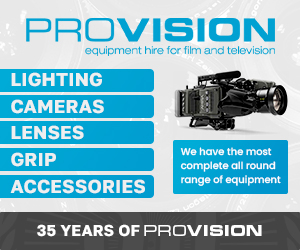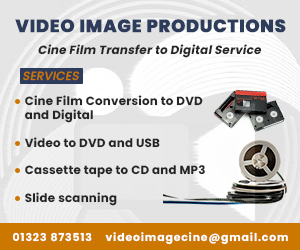Broadcast News
18/02/2015
Vidcheck – Getting It Right From The Start

With the increasingly diverse array of media formats required for delivery to multiple platforms, controlling content quality for all of these is a time-consuming and costly pain, writes Thomas Dove, CEO, Vidcheck.
There are quality control systems that perform tests automatically, but still require subsequent manual editing to repair the problems it finds, which has the knock-on effect of requiring a repeat of the QC processes to ensure that problems have been fixed. Add in the fact that manual intervention to repair QC issues can often introduce new problems, causing further repeats of the QC process, and it rapidly becomes a lengthy and, therefore, expensive problem.
Moreover, the further down the production line the problems are detected, the more difficult and expensive they are to correct, which heightens the need to detect – and correct – them early. For example, if you're a post-production house sending out broadcast ready material that is already corrected, it's much better than having to correct material that is already sitting on a broadcaster's server ready to go out.
If you're in the business of digital content distribution where you have a mezzanine file from which lots of different versions are made for an increasing array of delivery platforms, you need to check your master before you make all those versions. A company like this may make 40 different versions of, for example, a movie, and if you check and, importantly, automatically check and automatically correct the mezzanine master before you make those versions, it comes in at a much lower cost than if you had to recall, check and correct all 40 that have already gone out.
The most common areas to be checked and corrected are audio and video levels, which can be checked and corrected automatically. Photo-Sensitive Epilepsy (PSE) correction in the UK is also vital and a prime example of the need to ensure that content falls within legal limits. Failing to check that content does not contain incidents that are out of the acceptable parameters for those prone to PSE can leave you vulnerable to hefty, five-figure fines, not dissimilar to audio that is too loud for commercials. Those are only two examples, but should be ample evidence that getting your audio and video files right before they ever leave your facility, and certainly before it gets anywhere near transmission, is the right thing to do.
If you're a broadcaster and you get something in that's wrong, you have to bring it into your own editor, make sure it's edited correctly, check the video's been done correctly, QC it again afterwards and, then, all too often, repeat the process as other errors are found, or introduced in the process you've just been through.
What we have therefore developed is something that post-production editors genuinely need, i.e., a software technology that does all the required checks – automatically – to ensure that rendered files meet all the technical delivery requirements. This is what automated QC offers. I emphasise 'automated' because, as I've already mentioned, although there are many QC products and processes on the market, most require some degree of manual intervention, which is time-consuming and expensive. Our approach is different in that it's designed from the outset to make the process as simple as possible. If there are issues with a file, Vidchecker resolves the issue by performing not only fully automated QC, but also automated correction that intelligently checks and corrects video – including HEVC/H.265 format – plus audio parameters that people typically get wrong when preparing and exchanging file-based media between post production, distribution and broadcast.
Our Vidfixer product (the 'big brother' to Vidchecker) even takes care of PSE issues by providing fully automated correction of PSE luminance flashing as well as all the other automated corrections.
This is particularly relevant to post-production houses that put out files for external PSE test, who can now instead use the low cost Vidfixer-post to take the guesswork out of this correction, for a lower cost than a modest number of external PSE test runs.
So, if you want – no, need – to get your quality right, get it right from the start, and do it automatically, thereby saving the expense that you might later have to explain to the boss, or your client.
The article is also available to read in BFV online.
(IT/JP)
There are quality control systems that perform tests automatically, but still require subsequent manual editing to repair the problems it finds, which has the knock-on effect of requiring a repeat of the QC processes to ensure that problems have been fixed. Add in the fact that manual intervention to repair QC issues can often introduce new problems, causing further repeats of the QC process, and it rapidly becomes a lengthy and, therefore, expensive problem.
Moreover, the further down the production line the problems are detected, the more difficult and expensive they are to correct, which heightens the need to detect – and correct – them early. For example, if you're a post-production house sending out broadcast ready material that is already corrected, it's much better than having to correct material that is already sitting on a broadcaster's server ready to go out.
If you're in the business of digital content distribution where you have a mezzanine file from which lots of different versions are made for an increasing array of delivery platforms, you need to check your master before you make all those versions. A company like this may make 40 different versions of, for example, a movie, and if you check and, importantly, automatically check and automatically correct the mezzanine master before you make those versions, it comes in at a much lower cost than if you had to recall, check and correct all 40 that have already gone out.
The most common areas to be checked and corrected are audio and video levels, which can be checked and corrected automatically. Photo-Sensitive Epilepsy (PSE) correction in the UK is also vital and a prime example of the need to ensure that content falls within legal limits. Failing to check that content does not contain incidents that are out of the acceptable parameters for those prone to PSE can leave you vulnerable to hefty, five-figure fines, not dissimilar to audio that is too loud for commercials. Those are only two examples, but should be ample evidence that getting your audio and video files right before they ever leave your facility, and certainly before it gets anywhere near transmission, is the right thing to do.
If you're a broadcaster and you get something in that's wrong, you have to bring it into your own editor, make sure it's edited correctly, check the video's been done correctly, QC it again afterwards and, then, all too often, repeat the process as other errors are found, or introduced in the process you've just been through.
What we have therefore developed is something that post-production editors genuinely need, i.e., a software technology that does all the required checks – automatically – to ensure that rendered files meet all the technical delivery requirements. This is what automated QC offers. I emphasise 'automated' because, as I've already mentioned, although there are many QC products and processes on the market, most require some degree of manual intervention, which is time-consuming and expensive. Our approach is different in that it's designed from the outset to make the process as simple as possible. If there are issues with a file, Vidchecker resolves the issue by performing not only fully automated QC, but also automated correction that intelligently checks and corrects video – including HEVC/H.265 format – plus audio parameters that people typically get wrong when preparing and exchanging file-based media between post production, distribution and broadcast.
Our Vidfixer product (the 'big brother' to Vidchecker) even takes care of PSE issues by providing fully automated correction of PSE luminance flashing as well as all the other automated corrections.
This is particularly relevant to post-production houses that put out files for external PSE test, who can now instead use the low cost Vidfixer-post to take the guesswork out of this correction, for a lower cost than a modest number of external PSE test runs.
So, if you want – no, need – to get your quality right, get it right from the start, and do it automatically, thereby saving the expense that you might later have to explain to the boss, or your client.
The article is also available to read in BFV online.
(IT/JP)
Top Related Stories
Click here for the latest broadcast news stories.
19/01/2015
Check, Mate: Automated QC In The Post-DPP Market
Vidcheck provides a range of software tools that conduct Automated Quality Control (Auto QC) and Intelligent Automated Correction of errors on file ba
Check, Mate: Automated QC In The Post-DPP Market
Vidcheck provides a range of software tools that conduct Automated Quality Control (Auto QC) and Intelligent Automated Correction of errors on file ba
12/12/2016
Absolutely And Fundamentally Correct
I was gratified to read last week that another vendor was advocating the need to test things from first principles w.r.t. system infrastructure. Indee
Absolutely And Fundamentally Correct
I was gratified to read last week that another vendor was advocating the need to test things from first principles w.r.t. system infrastructure. Indee
16/10/2013
Wohler Releases RadiantGrid Detect And Correct
Wohler Technologies has announced the release of the RadiantGrid Detect and Correct™ legalisation option, featuring the RightHue™ algorithm. The new o
Wohler Releases RadiantGrid Detect And Correct
Wohler Technologies has announced the release of the RadiantGrid Detect and Correct™ legalisation option, featuring the RightHue™ algorithm. The new o
16/05/2013
Nugen Releases LM-Correct Update
NUGEN Audio has released an update to its LM-Correct loudness analysis and correction tool and its Loudness Management Batch (LMB) processor. The upda
Nugen Releases LM-Correct Update
NUGEN Audio has released an update to its LM-Correct loudness analysis and correction tool and its Loudness Management Batch (LMB) processor. The upda
03/07/2012
NUGEN Audio Adds iLok Licensing Option to LM-Correct Loudness Tool
NUGEN Audio, creators of intuitive tools for audio professionals, has released a new version of its LM-Correct loudness analysis and correction tool f
NUGEN Audio Adds iLok Licensing Option to LM-Correct Loudness Tool
NUGEN Audio, creators of intuitive tools for audio professionals, has released a new version of its LM-Correct loudness analysis and correction tool f
02/12/2005
Red Giant Software releases Key Correct Pro
Red Giant Software, publisher of a line of professional desktop tools including the award-winning Magic Bullet technology, has announced the availabil
Red Giant Software releases Key Correct Pro
Red Giant Software, publisher of a line of professional desktop tools including the award-winning Magic Bullet technology, has announced the availabil
21/10/2003
Criterion purchase second Correct System
MTI Film, a leader in software based image processing applications for the emerging tapeless workflow, have announced that New York based Criterion ha
Criterion purchase second Correct System
MTI Film, a leader in software based image processing applications for the emerging tapeless workflow, have announced that New York based Criterion ha
01/10/2003
Ascent purchase two MTI ‘Correct’ film restoration systems
Ascent Media Management Services have extended their digital film restoration capabilities with the purchase of two full licenses for MTI’s Correct re
Ascent purchase two MTI ‘Correct’ film restoration systems
Ascent Media Management Services have extended their digital film restoration capabilities with the purchase of two full licenses for MTI’s Correct re
12/10/2018
Your Web Traffic's Vital Statistics And Why You Need Regular Check-Ups
There’s a marketing mantra that says "If you’re not measuring, you're not marketing", but with the amount of data available these days marketers can e
Your Web Traffic's Vital Statistics And Why You Need Regular Check-Ups
There’s a marketing mantra that says "If you’re not measuring, you're not marketing", but with the amount of data available these days marketers can e
23/03/2016
Things To Check On When Filming With Animals
The following feature, 'Things to Check on when Filming with Animals', has been written by Animals Work. 1. Look under the guidelines working with ani
Things To Check On When Filming With Animals
The following feature, 'Things to Check on when Filming with Animals', has been written by Animals Work. 1. Look under the guidelines working with ani
26/03/2015
Vizrt/Reality Check Systems Collaboration Announced
Vizrt has joined forces with Reality Check Systems (RCS) to offer customers an integrated workflow between Viz Libero 3D sports analysis software and
Vizrt/Reality Check Systems Collaboration Announced
Vizrt has joined forces with Reality Check Systems (RCS) to offer customers an integrated workflow between Viz Libero 3D sports analysis software and
19/11/2013
Check Mate!
Post-modern, retro movie Computer Chess received a warm response from audiences when it debuted at the 2013 Sundance Film Festival. Set in the '80s an
Check Mate!
Post-modern, retro movie Computer Chess received a warm response from audiences when it debuted at the 2013 Sundance Film Festival. Set in the '80s an
09/08/2005
‘Reality Check’ for JVC ProHD Camera
The first film in the world to be shot with two JVC GY-HD101E ProHD cameras is now in production. ‘Reality Check’ stars Paul Mercurio (lead actor of A
‘Reality Check’ for JVC ProHD Camera
The first film in the world to be shot with two JVC GY-HD101E ProHD cameras is now in production. ‘Reality Check’ stars Paul Mercurio (lead actor of A
11/10/2002
Auntie's 'Lame Academy' receives a reality check
Better late than never, or so the saying goes, but the BBC seem to have waited just a little too long to jump on to the reality TV bandwagon. The corp
Auntie's 'Lame Academy' receives a reality check
Better late than never, or so the saying goes, but the BBC seem to have waited just a little too long to jump on to the reality TV bandwagon. The corp
21/03/2014
T&M Merges Into QC (Pt. 2)
Inserting editing corrections for files that are rejected or recalled is an issue. Can it be solved soon? "If you are referring to editor annotations
T&M Merges Into QC (Pt. 2)
Inserting editing corrections for files that are rejected or recalled is an issue. Can it be solved soon? "If you are referring to editor annotations















